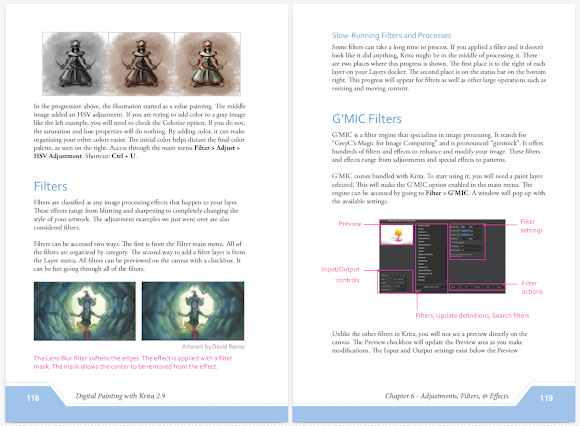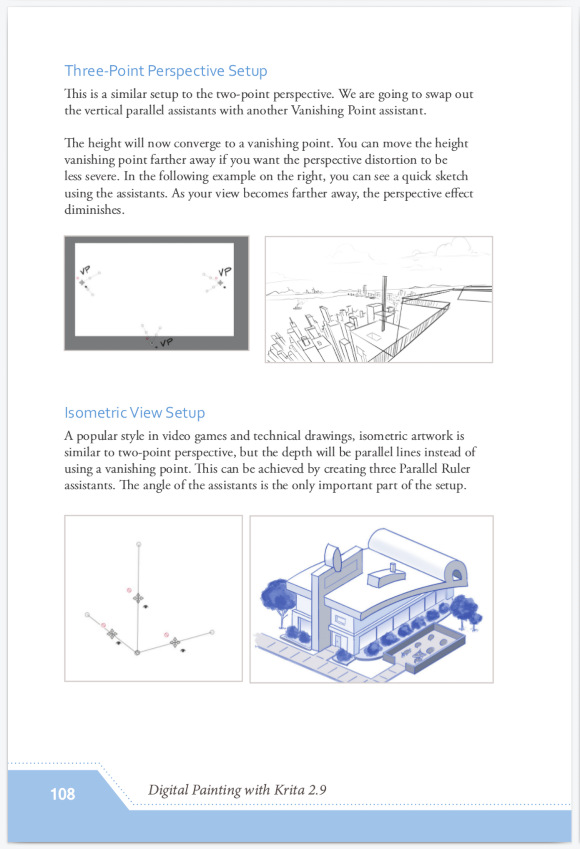Book Review: Digital Painting with Krita 2.9
If you are new to digital painting, installing and using Krita is free forever, and the newly published book by Scott Petrovic will get you started in no time.
The reasons I’m personally very excited about this book go beyond the actual content in question. Some of them have to do with the author’s persona, and others — with how this book looks in the general context of manuals on free software for creative professionals.
Lately I’ve been noticing a lot of excitement about Linux being a success, because it’s on your phones/tablets and on the servers that run your favorite websites and services. But talk to a publisher about writing a book on a major, but niche free application, and you typically get red lights unless it’s PostgreSQL or LibreOffice or some other highly visible project.
This has led Scott Petrovic, a designer, developer, and artist from St. Louis, USA, to start his own little publishing company, Louvus Media. It would otherwise be impossible for him to publish a book on Krita — increasingly popular free software for digital painting. Scott ended up single-handedly layouting and typesetting both printable and MOBI/EPUB versions of the book.
One more thing that needs to be told about the author is that he’s pretty much part of the development team in the Krita project. Here’s a quick rundown of Scott’s contributions to date:
- designed Krita’s new website;
- implemented saving tools settings between sessions;
- did most of the UI for the new transform tools;
- improved brush editor UI in 2.9.x;
- fixed various bugs.
Scott is also the reason why Krita is now featuring in the ImagineFX magazine since early this year.
Being that much involved with the project tends to make a huge impact on the accuracy of the content. There was simply no single inaccurate statement in the book that I could detect.

Typically publishers hire technical editors to make this possible. Scott got half of the Krita team to become his technical editors, and he’s giving back by promoting the software through the book and sharing a slice of whatever income it will bring with Krita Foundation.
In his own words:
I do believe there is a need for this type of material. Something that will make a big impact on Krita’s future and how the graphics community sees it. I hope it will help people see how great open source software can be.
That said, given the author’s background, the book is surprisingly not technical. Don’t expect to find blending mode equations or explanations of app’s internals. Even the chapter on installation is rather quick and non-verbose (and rightfully so).
Instead Scott focused on teaching actual skills. Nearly every feature is explained by how you can apply the concept in a practical manner.
Another major pro is that Scott used (with permission) other artists’ artworks to illustrate the book, along with his own illustrations which are very nicely done.

If you’ve read books on free software for designers and photographers before, you know that typically illustrations are from the ‘meh’ department at best. Making a book on software for artists look like it’s actually done for artists is how things are supposed to go. But given how real life works, this book makes a major, if belated step forward. Oh well.
For the reference, here’s the contents of the book, chapter by chapter:
- User interface
- Painting Fundamentals
- Layers
- Selections and Transforms
- Drawing Aids
- Adjustments, Filters, and Effects
- Brush Editor Overview
- Brush Engines
- Working with Color
- Vector Tools
As you can see, the book covers some tools that are often considered generic, like filters and effects. However, Scott puts these tools into the digital painting context, so you need not worry about it.
Conclusions
In a nutshell, ‘Digital Painting with Krita 2.9’ by Scott Petrovic is your go-to book to get cracking with Krita. It explains both basics and advanced features in a way that gets you to actually try, understand, and actively use them.
You probably won’t treat the book as a complete reference to Krita’s features, but that’s OK. Once you know your way around the software, you can happily live off tutorials by David Revoy et al. and find out more nitty gritty details from conversations with other users online, as well as from online reference that’s getting a lot of attention lately.
So far it’s the first and the only book in English on Krita (there are two more in Japanese), and as far as first things go, this one is pretty amazing.
One last thing I want to say here is that Scott welcomes translations of his book. Should you decide to work on one, you can freely discuss it with him. You can get in contact with him by visiting the chat room on IRC (scottyp) or sending him a message on the forum (scottpetrovic).
Patreon subscribers get early access to my posts. If you are feeling generous, you can also make a one-time donation on BuyMeACoffee.
